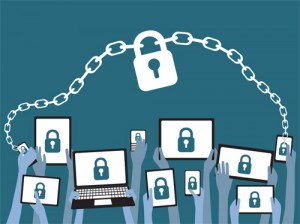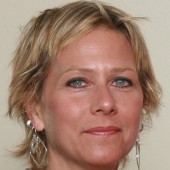 As part of the American Library Association’s (ALA) Banned Books Week campaign to raise awareness about the impact of censorship on intellectual freedom, the American Association of School Librarians (AASL) is designating Wednesday September 24th, 2014 as the fourth Annual Banned Websites Awareness Day (BWAD).
As part of the American Library Association’s (ALA) Banned Books Week campaign to raise awareness about the impact of censorship on intellectual freedom, the American Association of School Librarians (AASL) is designating Wednesday September 24th, 2014 as the fourth Annual Banned Websites Awareness Day (BWAD).
AASL is to be commended for taking the lead on this intellectual freedom issue. It is increasingly evident that access to participatory media is essential to teaching the frameworks set forth by the Partnership for 21st Century Learning, dedicated to fostering 21st-century readiness among students and, more specifically for school librarians, AASL’s Learning for Life (L4L) standards. Yet these resources—those that create opportunities for students to contribute and publish online—are often blocked in K–12 schools.
Internet censorship is most often fueled by fear. Federal legislation, costly litigation, online predators, network security, and privacy breeches are commonly cited as justification for aggressive filtering practices. While these concerns are legitimate, denying teachers and students a chance to experience online participatory learning together verges on professional negligence. When schools fail to teach students how to learn and publish on the World Wide Web, they deny students fundamental instruction that is necessary for success in today’s world and even more so in tomorrow’s.
Students are entitled to guidance and supervision by vetted, certified professionals when learning to navigate the participatory Web. This is how they learn responsible use. School should be the training ground for online interaction, the place where digital citizenship instruction is embedded across disciplines – not the place where students are sequestered from the real world. In most cases, students have access to what is blocked in school once they leave the school building, and students in censored schools have to learn how to negotiate this unregulated landscape unsupervised and on their own. Educators have an obligation to correct that, even if it seems frightening to do so.
The START of BANNED WEBSITES AWARENESS DAY
The AASL first launched BWAD in 2011 at the suggestion of then-AASL president, Nancy Everhart, in response to concerns from AASL members about the impact of filtering on K–12 learning. “Approving it shortly before it was to ‘launch’ allowed us to implement it right away”, said Everhart. During her 2010–11 AASL presidency, Everhart visited more than 30 school libraries across the country that had been identified as outstanding by their affiliate organization. Over and over, she heard school librarians report that what seemed like arbitrary filtering practices impeded their ability to fulfill their responsibilities as instructional partners and information specialists—from connecting students with the instruction and resources they needed for 21st-century learning. In a few instances, she witnessed how open Internet access enhanced learning and digital citizenship instruction.
Vocal intellectual freedom enthusiasts within the school librarian community have written compelling endorsements of BWAD since its inception. Educator Doug Johnson, in his Blue Skunk Blog, wrote, “While other educators might promote books, help integrate technology skills and assist in information literacy projects, who else in the school fights for student (and teacher) access to uncensored digital information and ideas?” In his blog Stephen’s Lighthouse, librarian and consultant Stephen Abram said, “Blocking access to social media leaves most students susceptible to dangerous behaviors as they can’t easily be taught digital safety in a vacuum.” In a 2010 AASL blog post, former AASL president Helen Adams wrote, “many administrators exhibited apprehension of students’ on campus use of Web 2.0 interactive tools despite the fact that the skills developed when using social media are necessary for success in a global society.”
In the national Speak Up survey from the nonprofit educational organization Project Tomorrow, students’ responses in 2012 included a complaint about school filters and firewalls as well. The other top responses centered on how administrations limited students’ access to the digital tools and resources they use regularly outside of school:
- School filters and firewalls block website I need
- I cannot access my social media sites
- I cannot use my own mobile device
- There are too many rules about using technology at school
- I cannot use text messaging
In the 2013 version of the survey, 62 percent of nearly 5,000 middle school respondents said, “Websites that I need are blocked (through school filters or firewalls).”
As with Banned Books Week, schools celebrate Banned Websites Awareness Day in variety of ways. The New York Times reported in 2011 that students at Silver Creek High School in Longmont, Colorado, held a “graffiti debate” on censorship. New Trier High School in the Chicago suburbs surveyed students about blocked Web sites after loosening its own Internet filters this year. In New York City, students and teachers at Middle School 127 in the Bronx sent more than 60 emails to the Department of Education protesting a block on personal blogs and social media sites. In New Canaan, Connecticut, the high school blocked Facebook, Twitter, and YouTube for six hours to show solidarity with students in schools where those sites are consistently blocked.
Resources for Banned Websites Awareness Day
AASL provides a number of resources to help educators advocate for intellectual freedom in K–12 learning, including an online advocacy portal to inform the public about BWAD and a comprehensive list of resources in its Essential Links portal. In 2012, AASL published a white paper on the use of technology in schools and sponsored an archived webinar hosted by Daring Librarian blogger Gwyneth Jones, “How to Be a Ninja Warrior Filter Fighter!”
Unfortunately, a number of school librarians opt out of acknowledging BWAD to avoid backlash or even retribution from their school and network administrators. While this concern is real, there is growing momentum behind the movement to rethink filtering practices.
In the summer of 2013, the ALA Washington Office of Information Policy and Technology Policy (OITP) partnered with the ALA Office of Intellectual Freedom (OIF) and Google to host a symposium on the impact of Children’s’ Internet Protection Act (CIPA) on education. This event informed much of the 2014 report, Fencing Out Knowledge: Impacts of the Children’s Internet Protection Act (CIPA) 10 Years Later, that was widely disseminated at the 2014 ALA National Conference. The report recommends that libraries play a role in increasing digital inclusion by doing the following:
- Increase awareness of the spectrum of filtering choices
- Develop a toolkit for school leaders
- Establish a digital repository of internet filtering studies
- Conduct research to explore the educational uses of social media platforms and assess the impact of filtering in schools
During the 2014 ALA Annual Conference, the AASL Board voted to revise its mission statement, which now reads, “The American Association of School Librarians empowers leaders to transform teaching and learning.” This refocused vision aligns with the Fencing Out Knowledge report and empowers AASL to play a role in supporting school librarians carrying out the OITP/OIF report’s recommendations. Banned Websites Awareness Day provides a vehicle to channel that effort. The board also voted to establish a BWAD committee, which is likely to be charged with raising awareness about the impact of overly restrictive blocking of Internet sites in K–12 learning. The committee’s establishment underscores AASL’s commitment to transform learning.
The Fencing Out Knowledge study identified “an overreach in the implementation of CIPA—far beyond the requirements and intent of the law.” This is one of the chief misunderstandings policy makers use to justify overblocking Internet sites in K–12 schools. The information provided in the report, along with new opportunities for involvement on the forthcoming AASL BWAD committee, may inspire more school librarians to promote Banned Websites Awareness Day this year.
 Michelle Luhtala (mluhtala@mac.com) is the department chair of the New Canaan (CT) High School Library and is a professional learning community facilitator at edWeb.net. She blogs at Bibliotech.me.
Michelle Luhtala (mluhtala@mac.com) is the department chair of the New Canaan (CT) High School Library and is a professional learning community facilitator at edWeb.net. She blogs at Bibliotech.me.


